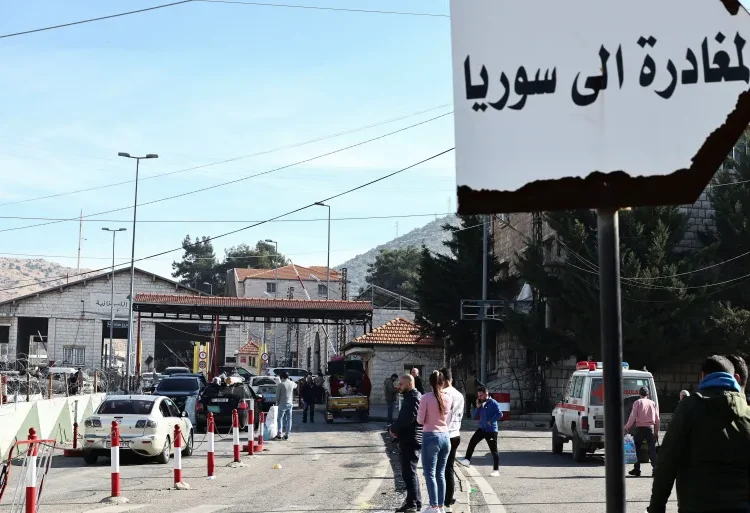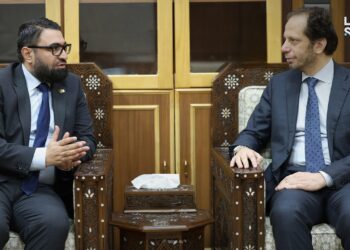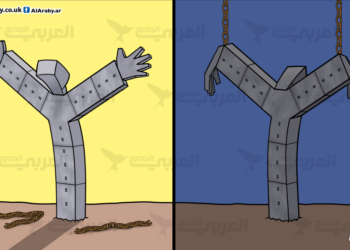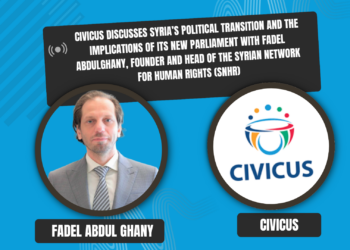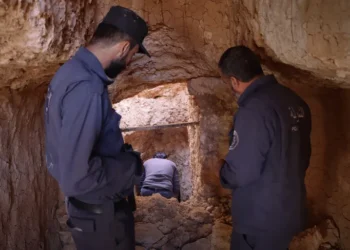Fadel Abdulghany
The fall of Bashar al-Assad’s regime in December 2024 marked a pivotal turning point in the ongoing Syrian crisis related to forced displacement (of refugees and internally displaced persons), but the anticipated mass return remains hampered by a complex set of obstacles that go beyond the scope of conventional analysis.
UNHCR statistics indicate that between December 2024 and mid-2025, approximately 500,000 refugees and 1.2 million internally displaced persons (IDPs) returned to their areas of origin. These numbers are modest compared to the total number of forcibly displaced persons, which amounts to approximately 6.8 million refugees and 6.9 million internally displaced persons, distributed throughout the region and beyond.
This limited rate of return, despite the removal of the main political obstacle, reveals the existence of deeper and more complex obstacles that require a more detailed legal study.
Traditional efforts to understand these obstacles have focused on material and tangible aspects, such as destroyed infrastructure, property rights disputes, economic decline, and lingering security concerns. However, insufficient attention has been given to a dimension that has begun to assert itself forcefully following the events in the Syrian coast and Suwayda: the spread of hate speech and sectarian incitement online, which transcends geographic boundaries and contributes to the perpetuation of displacement through digital and virtual mechanisms.
This article hypothesizes that online hate speech, sectarian incitement, and the widespread dissemination of videos depicting violence on social media constitute a distinct category of barriers to return, clearly shaping the return decisions of Syrian refugees and IDPs.
Sectarian Barriers to Return
The shift of sectarian tensions from the physical to the digital sphere represents an evolution in how post-conflict societies deal with and perpetuate identity divisions.
Traditional concepts of sectarianism, based on territorial control and direct violence, are proving limited in capturing contemporary displacement dynamics, as technological means have created new virtual spaces that prolong conflict.
This development requires reconsidering the concept of sectarian barriers, taking into account the unique characteristics of the digital environment: its sustainability, ease of dissemination, and ability to transcend time and geographic barriers.
Digital sectarianism is the widespread dissemination of identity-based hatred across online platforms, which exacerbates internal divisions, tensions, and rifts, threatening post-conflict societal stability.
Unlike traditional sectarian violence, which requires geographic proximity and organizational capacity, digital sectarianism operates through decentralized, cross-border networks that contribute to entrenching divisions among diaspora communities.
The Syrian case clearly reflects this shift, with social media platforms demonstrating the widespread prevalence of sectarian rhetoric both before and after the fall of the Assad regime, particularly following the events in the coastal areas and Suwayda. This has led to the creation of a digital infrastructure that has increasingly sharpened sectarian divisions.
Social media platforms play a major role in deepening these divisions through multiple mechanisms:
- First, algorithms amplify sectarian content and promote its spread, while suppressing moderate voices.
- Second, the viral nature of inflammatory content gives individual or local incidents an exaggerated digital presence, generalizing local concerns to become universal.
- Third, the anonymous nature of many platforms allows for the dissemination of extremist rhetoric that is difficult to express in direct social interactions.
Together, these mechanisms produce what can be described as the “affective infrastructure of hate,” a digital infrastructure that constantly feeds and reinforces sectarian sentiments across time and space.
The Psychosocial Impact of Online Hate Speech
The interconnection between digital exposure to sectarian content and the mental health challenges of displaced people reveals the complex pathways through which online hate speech transforms into actual human suffering.
The Syrian context presents a challenge in this regard, as forcibly displaced persons face intertwined and cumulative sources of psychological trauma, ranging from direct exposure to violence, to the difficulties associated with displacement, to ongoing exposure to sectarian digital content directed against their communities. This “triple trauma” compounds the psychological challenges experienced by victims of forced displacement.
Digital platforms facilitate the spread of what psychologists call “vicarious trauma,” through the widespread circulation of videos depicting violent scenes, which reactivates trauma responses in viewers.
Studies on displaced populations indicate that these psychological effects do not diminish over time, but may intensify as a result of continued exposure to traumatic digital content, which algorithms re-emerge to users who have previously interacted with conflict-related content. This creates cycles of renewed trauma that keep displaced populations on constant alert, even as physical threats recede.
Instilling fear through digital sectarian discourse contributes to shaping the return decisions of displaced persons and refugees through specific psychological mechanisms. Online inflammatory content creates preemptive anxiety about return scenarios, transforming theoretical possibilities into realistic fears through the use of threatening and direct language and imagery.
Field studies on potential returnees confirm that exposure to sectarian digital content increases their sense of threat, weakens confidence in stated security guarantees, and increases their assessment of the potential risks upon return.
The continued presence of inflammatory content online keeps threats issued during the height of the conflict ever-present in the minds of displaced people, a phenomenon known as “temporal collapse.” This forces potential returnees to assess their situation not only based on current circumstances, but also based on persistent digital content that signals potential future vulnerability.
The Digital Battlefield in Syria and Its Impact on Return Dynamics
The digital environment in post-conflict Syria has emerged as a fierce battleground, where sectarian narratives are competing to shape perceptions of return and its conditions. Initially, this phenomenon was relatively limited to the confrontation between supporters of the Assad regime and its opponents. However, recent events in the coastal areas in March and in Suwayda in July 2025 have sparked a wave of sectarian rhetoric that is likely to have far-reaching repercussions beyond the foreseeable future.
This phenomenon is not limited to a mere escalation in rhetoric; rather, it indicates a fundamental shift in the mechanisms for forming sectarian identities and their political and social use as a weapon in the Syrian conflict.
These identities exploit the multi-platform digital environment, leading to the widespread dissemination of hateful content with a permanence unseen in traditional forms of sectarian conflict.
Sectarian discourse online has evolved from veiled references or vague hints to explicit discourse based on clear targeting of sub-identities, leading to the emergence of internal tensions and divisions that seriously threaten the chances of peaceful coexistence.
This linguistic shift reflects deeper structural shifts in Syrian society’s perception of difference and belonging. The digital archive of sectarian identities, through hashtags, groups, and popular phrases, contributes to the creation of what can be described as an “archive of hate,” forcing potential returnees to engage with it as part of their assessment of the chances of a safe return to their areas of origin.
Certain digital platforms have emerged as primary channels for disseminating and promoting sectarian discourse, each with its own unique characteristics that influence the nature of the content published and its dissemination. Facebook groups organized according to geographical divisions have become virtual arenas where sectarian incidents are documented, discussed, and amplified, transforming local incidents into public narratives that influence relations between different sects.
While WhatsApp groups, due to their privacy, encryption, and personal proximity dynamics, contribute to the widespread dissemination of unverified reports and inflammatory rumors within socially trusted circles, giving sectarian discourse greater credibility through direct interaction.
The nature of the X platform, including its instantaneous interaction and hashtag propagation, allows for the rapid escalation of sectarian tensions, especially during times of crisis or high-profile events. Telegram channels also play a pivotal role as platforms for sectarian coordination and mobilization, particularly those run by individuals or groups linked to the former regime, armed factions, or extremist groups, who seek to target specific communities through their threatening content.
Available evidence suggests that many of these accounts may be directed by states or parties seeking to deepen divisions, with the aim of transforming the sectarian crisis into armed confrontations that keep displaced people away from their homelands.
Violent Videos as a Deterrent to Return
The circulation of violent videos on digital networks is an effective and widespread means of prolonging sectarian conflict, becoming a powerful psychological and emotional barrier that deters refugees and displaced persons from returning, overriding rational considerations related to the security assessment of the situation.
Recordings of historical and contemporary sectarian violence are widely circulated, ranging from scenes of ancient massacres and violations of human dignity to contemporary images of destruction and intimidation. These visuals are distributed across Syrian digital networks with a powerful influence ensured by modern algorithms.
These clips serve multiple functions: they perpetuate historical trauma, reinforce ongoing threats, and cast a shadow over future scenarios of return. The continued availability of these digital materials keeps the impact of past violence ever-present, bridging the temporal distance between yesterday’s atrocities and today’s decisions.
The impact of these videos on refugee and displaced persons’ decision-making processes regarding return is clearly evident through complex psychological mechanisms that directly integrate visual evidence into risk assessments.
Potential returnees indicate that simply viewing a single video depicting sectarian violence in their home areas may be enough to make them reluctant to return, even if there are multiple reports of relative improvements in security conditions.
The viral nature of this content ensures that isolated or sporadic incidents gain an exaggerated impact. These clips are rapidly transmitted among Syrian diaspora communities, bypassing any contextual information or objective assessments of actual risks. This reinforces what is known in the psychological literature as “cognitive availability chains,” meaning that readily available images and clips of violence dominate displaced people’s perceptions of potential risk.
This digital content creates “imagined geographies of fear,” a psychological and emotional construct that perpetuates displacement and challenges traditional notions of geographical belonging. Videos depicting violence become permanent “digital monuments,” reminding displaced people of places they consider to be inextricably tainted by sectarian violence, regardless of the current reality.
These imagined geographies are composed of emotional maps of fear, disgust, and anger, and they strongly influence decisions to return, even from long distances. Syrian refugees describe their visceral reactions to watching footage of violence in their areas of origin, which transform into feelings of deep aversion and disgust, which then transform into decisions to refuse to return.
Conclusion
Digital hate speech, sectarian incitement, and the spread of violent videos on social media constitute what can be called the “fourth dimension” of the Syrian displacement crisis. This dimension overlaps with, yet is distinctly independent of, traditional displacement factors such as physical destruction, security threats, legal obstacles, and economic restrictions.
This digital dimension has characteristics that call for a reconsideration of policies and approaches related to return. It crosses borders, persists despite political transformations, and creates psychological and emotional barriers that may be more difficult than physical barriers.
The Syrian case clearly demonstrates how displaced persons and refugees face challenges not only from the destruction of infrastructure or disputes over property rights, but also from a digital environment saturated with sectarian hatred, constantly reproducing the psychological and social conditions that underlie conflict.
Political recognition of digital sectarianism as a major obstacle to the return of displaced persons and refugees has profound implications and requires the Syrian government and the international community to develop advanced strategies that integrate technical, psychological, and political aspects.
Traditional efforts to facilitate return, which typically focus on rebuilding infrastructure, resolving legal disputes, and providing security guarantees, should be complemented by digital initiatives aimed at building peace and coexistence.
These initiatives include establishing specialized units within transitional justice mechanisms to monitor, analyze, and address hate speech and incitement to violence in the digital space, in addition to developing effective partnerships with major social media platforms to identify and remove content that incites sectarian violence.
Educational programs that promote digital literacy should also be developed, with the goal of enabling displaced persons and refugees to critically evaluate digital content and encouraging and supporting the production of alternative narratives that reject sectarian frameworks and promote coexistence and social cohesion.
Moreover, addressing the challenges of the digital sphere requires specialized legislation, institutional capacity building, and international and UN cooperation frameworks capable of addressing the transnational nature of sectarian content.
Achieving a sustainable return for Syrians is not limited to rebuilding destroyed cities or correcting their legal status alone. It also requires reclaiming the digital sphere from the merchants of hatred and sectarian incitement. This requires a shift in understanding the concept of return after the end of the conflict, from a mere geographical relocation to a complex negotiation of digital environments that profoundly impact perceptions of identity, security, and coexistence.
By recognizing this reality, the international community can contribute to creating the appropriate conditions that enable millions of displaced Syrians and refugees to return to their homes, without the constant fear of digital hatred that continues to spread powerfully across the social networks that simultaneously unite and divide them.
